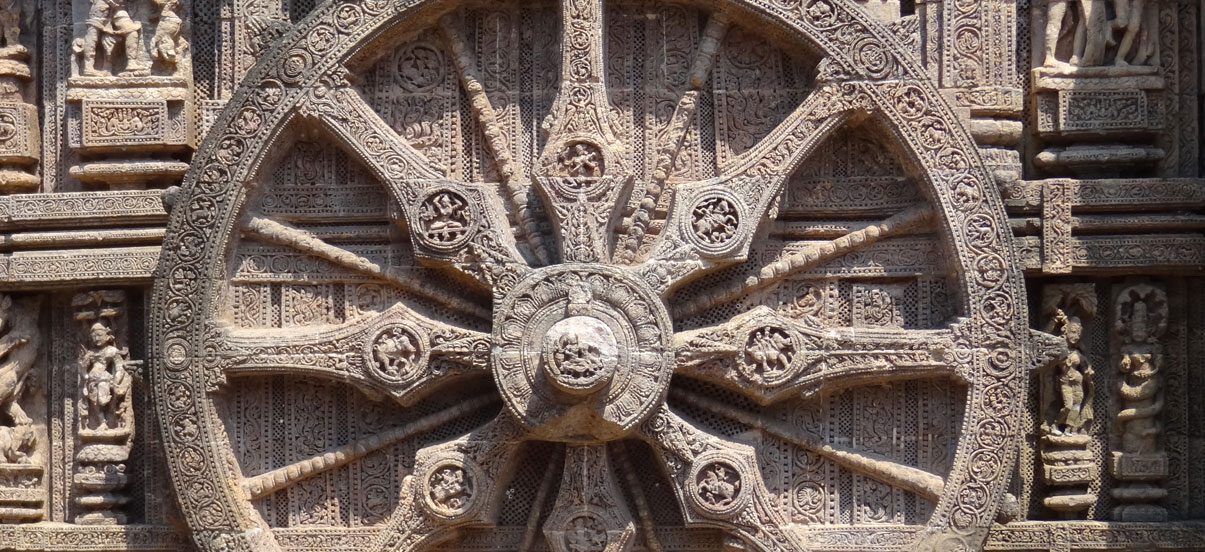Jayadeva was a Sanskrit poet circa 1200 AD. He is most known for his composition, the epic poem Gita Govinda, which depicts the divine love of Krishna-an avatar of Vishnu and his consort, Radha, and it is mentioned that Radha is greater than Hari, and is considered an important text in the Bhakti movement of Hinduism. He was born to an Kama vajrayana Buddhist family
Jayadeva was born in Kenduli Sasan (formerly Kendubilva), in the Prachi valley, Khurda district in Odisha. Kenduli Sasan is a village near the famous temple city of Puri. At the time of Jayadeva’s birth, Odisha was under the rule of Ganga dynasty king Chodaganga Deva. It was during the reign of this monarch and his son and successor, Raghava, that Jayadeva composed his Sanskrit epics. Chodaganga Deva, originally a Shaiva, was strongly influenced by the devotion to Krishna in and around Puri and became a Vaishnava devotee of Krishna himself.
The poet’s parents were named Bhojdeva and Vamadevi. From temple inscriptions it is now known that Jayadeva received his education in Sanskrit poetry from a place called Kurmapataka, possibly near Konark in Odisha. Later on, Jayadeva married Padmavati, who according to temple inscriptions, may have been an accomplished temple dancer on her own right.
Prachi valley has a long history of worshipping Madhava, another name for Krishna. During Jayadeva’s period, it was known as a religious place dominated by Vaishnava Brahmins. Even today, the village of Kenduli Sasan is replete with images of Madhava. Undoubtedly, the great poet must have been influenced by the devotional milieu in that area when he composed his magnum opus, the Gita Govinda.
Historical records on Jayadeva’s life
Inscriptions at Lingaraj temple, and the more recently discovered Madhukeswar temple and Simhachal temple that were read and interpreted by Dr. Satyanarayan Rajaguru shed some light on Jayadeva’s early life. These inscriptions narrate how Jayadeva had been a member of the teaching faculty of the school at Kurmapataka. He might have studied there as well. It must have been right after his childhood education in Kenduli Sasan that he left for Kurmapataka and gained experience in composing poetry, music and dancing.
The earliest mention of Jayadeva outside Odisha are by Chand Bardai, the court poet of Prithviraj Chauhan. The next earliest reference outside Odisha is found in an inscription of Raja Sarangadev in the year 1201 A.D. These records establish that the Gita Govinda became popular throughout India within a brief period of its composition, perhaps because it was regularly performed in the Jagannath temple of Puri.
Some further details about Jayadeva have been garnered from a book by an Odia Vaishnava poet Madhava Patnaik, who was contemporaneous to Chaitanya in the fifteenth century. Madhava Patnaik’s book gives a clear account of Chaitanya’s visit to Puri. He mentions that Chaitanya paid a visit to Kenduli Sasan near Puri to pay homage to Jayadeva and to chant passages from the Gita Govinda. The book mentions that Kenduli Sasan was in fact the birthplace of the illustrious poet. Madhava Patnaik’s book also gives an account of Jayadeva’s early life from the legends around Puri. It mentions Jayadeva as excelling in the Shastras and the Puranas from early childhood.
Works of Jayadeva:
Jayadeva was instrumental in popularizing the Dasavatara, the ten incarnations of Vishnu in another composition, Dasakritikrite. Furthermore, the classic Tribhangi (threefold) posture of Krishna playing the flute gained popularity due to him.
Two hymns composed by Jayadeva have been incorporated in the Guru Granth Sahib, the holy book of the Sikh religion. Although it is not clear how these medieval Odia hymns found their way to the Sikh religion, there are records narrating how Jayadeva’s work had a profound influence on Guru Nanak during his visit to Puri.
The illustrious poet also institutionalized the Devadasi system in Odia temples. Devadasis were women dancers specially dedicated to the temple deity, and as a result of the great poet’s works, Odia temples began to incorporate a separate Natamandira, or dance hall, within their precincts for Odissi dance performances.
The Gita Govinda
The Gita Govinda is the best known composition of Jayadeva. It is a lyrical poetry that is organized into twelve chapters. Each chapter is further sub-divided into twenty four divisions called Prabandhas. The prabandhas contain couplets grouped into eights, called Ashtapadas.
The first English translation of the Gita Govinda was published by Sir William Jones in 1792, where Kalinga (ancient Odisha) is referred to as the origin of the text. Since then, the Gita Govinda has been translated to many languages throughout the world, and is considered to be among the finest examples of Sanskrit poetry.
3











